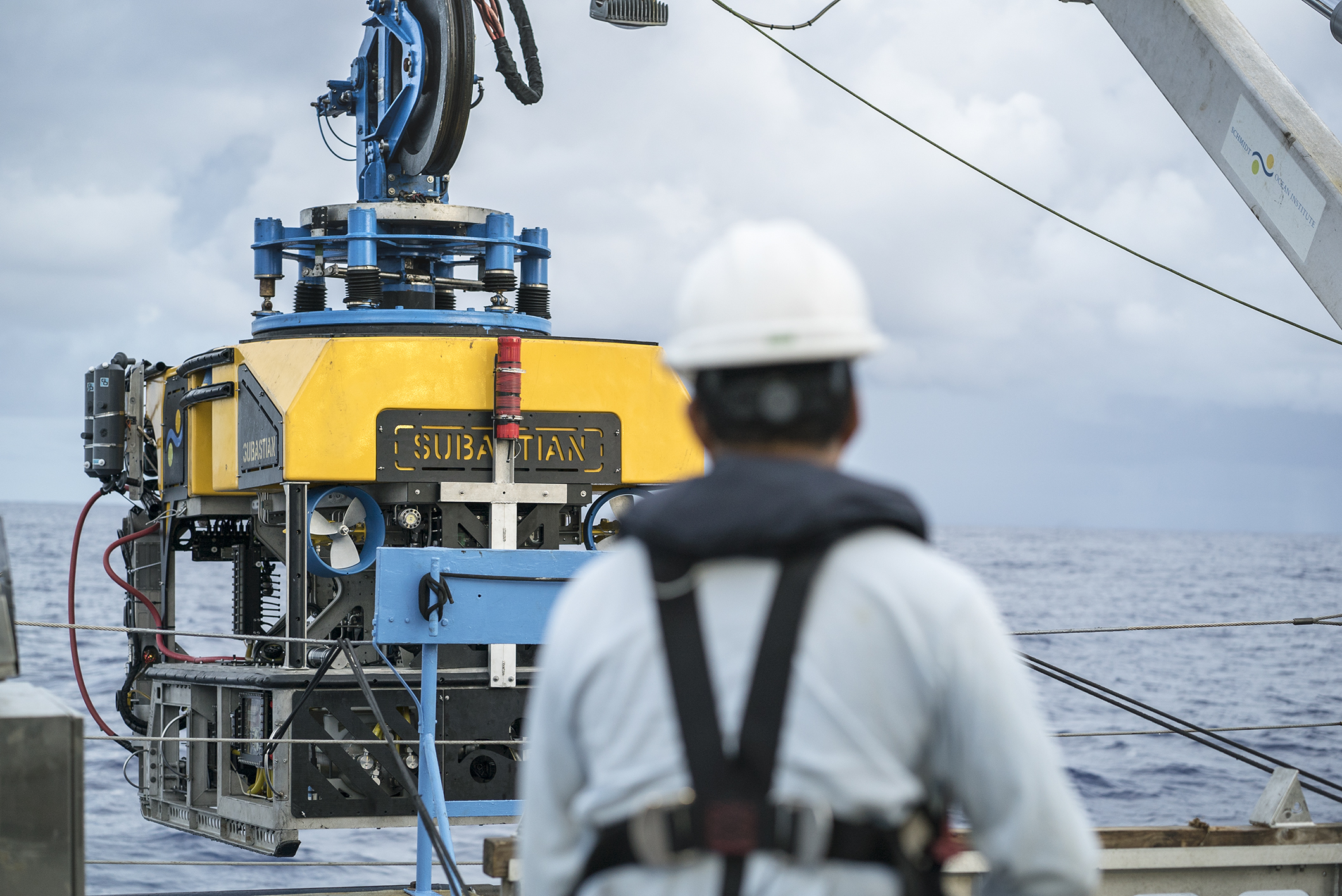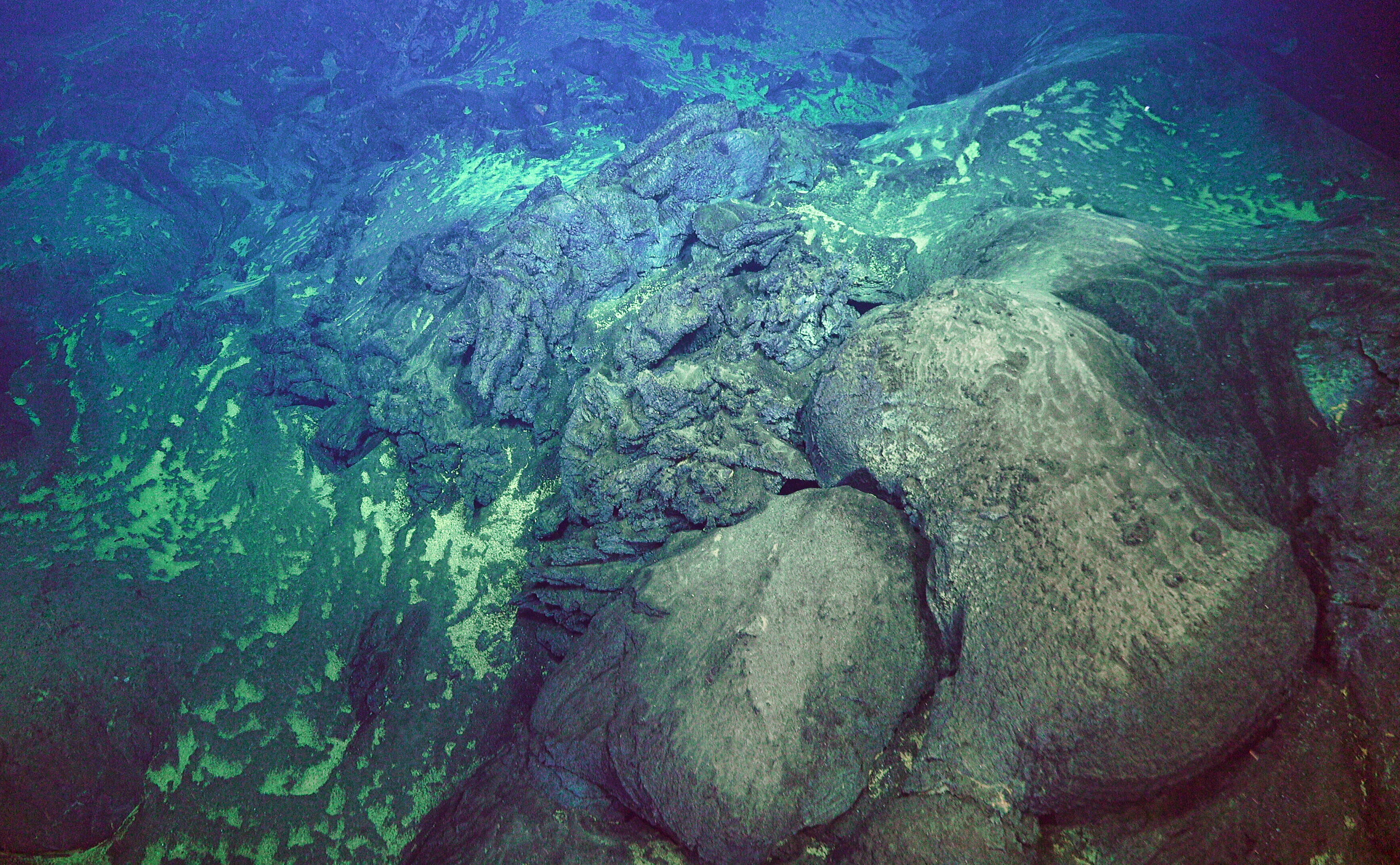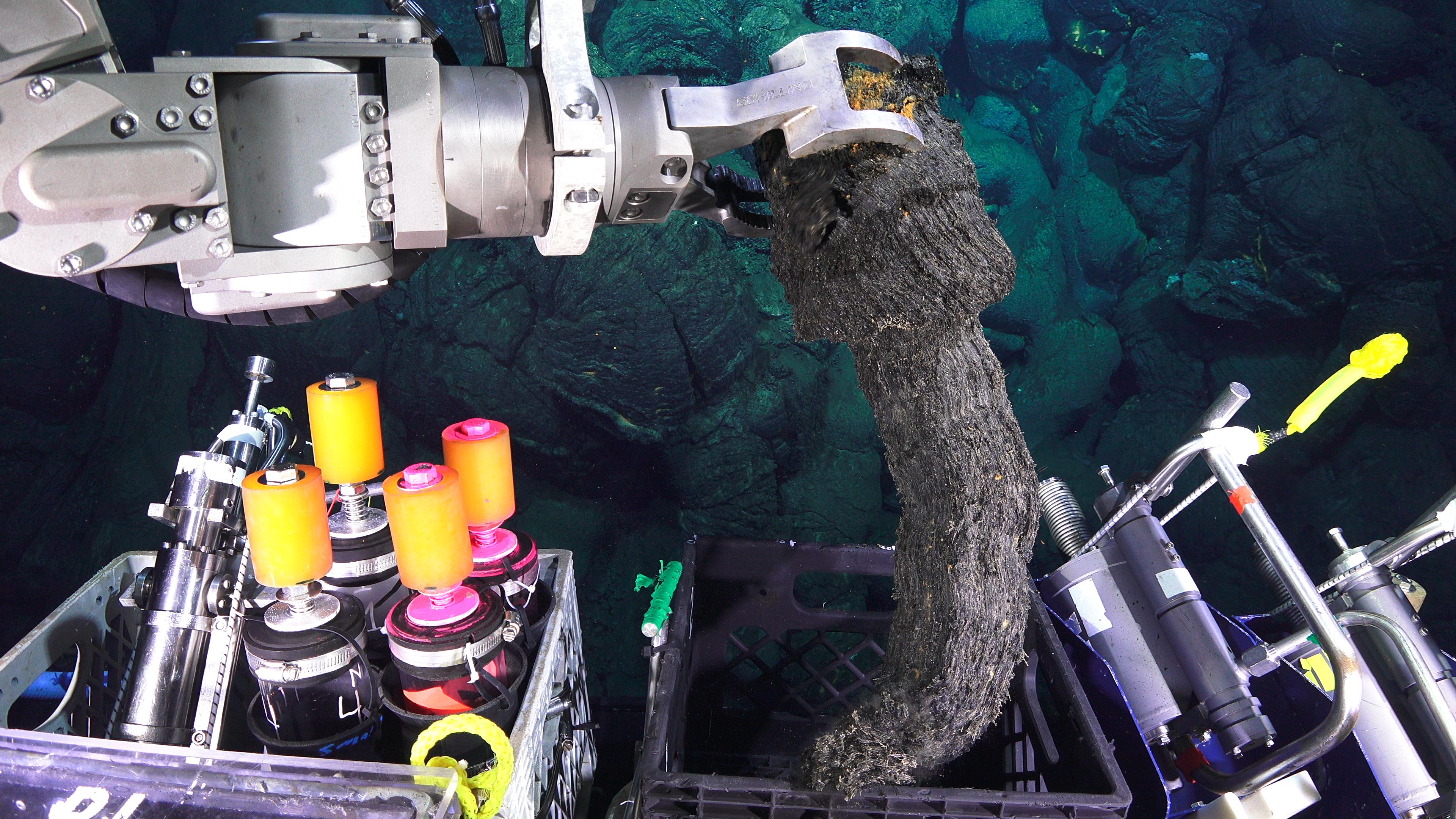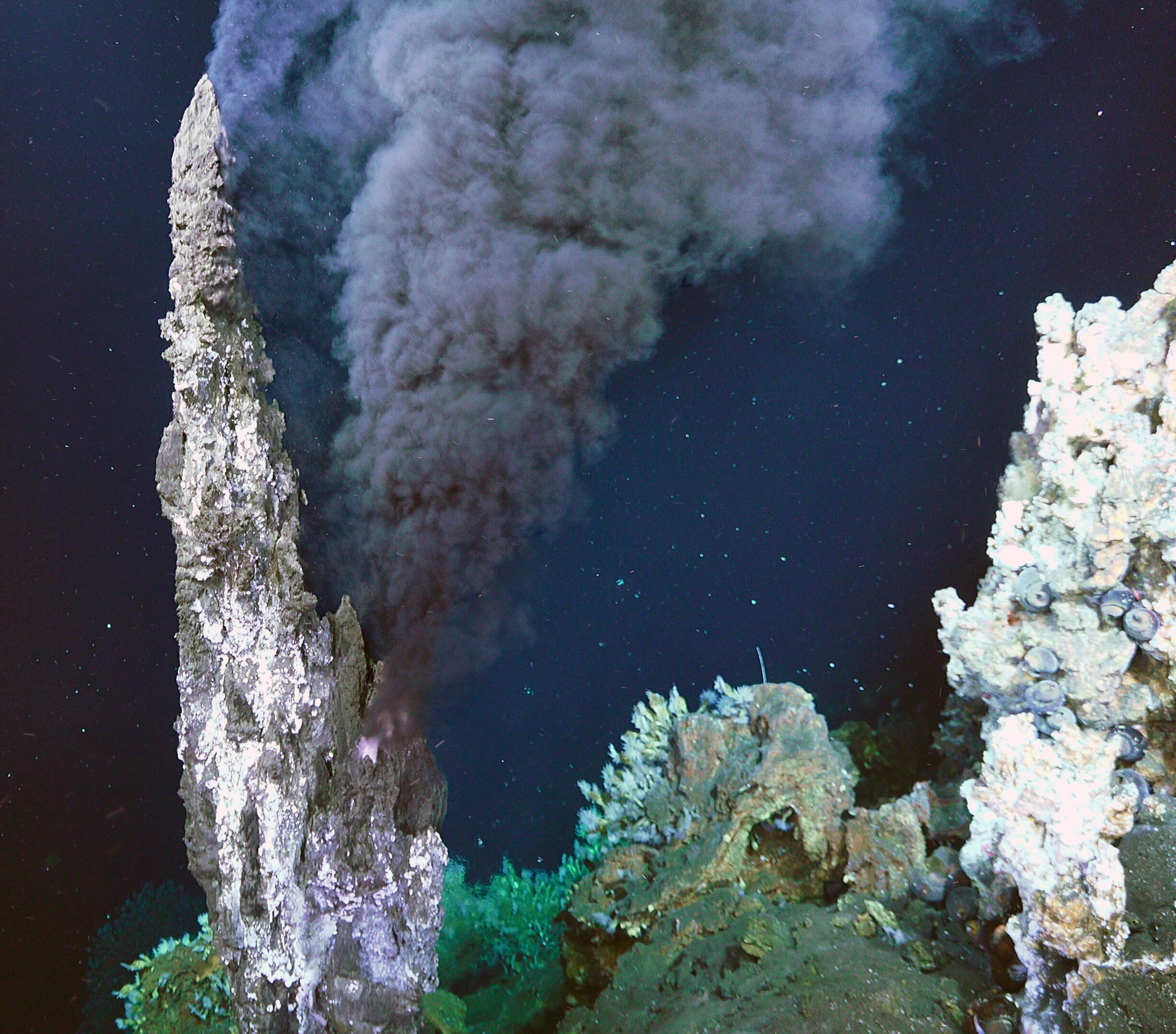The area studied in this expedition is one of the most active underwater volcano sites in the world, and in its limited space contains perhaps the largest number of individual closely-spaced volcanoes globally.
Falkor’s last research cruise of 2017 took place within the Mata Volcano group off the coast of the Kingdom of Tonga, one of the most active volcanic zones in the ocean. The multidisciplinary expedition team led by Dr. Ken Rubin, University of Hawai’i, traveled to this remote region to investigate volcanic eruptions and their impacts on ocean chemistry and ecosystems using robotic technology.
During the first leg of the expedition, the United States National Science Foundation’s autonomous underwater vehicle (AUV) Sentry, operated by Woods Hole Oceanographic Institution and supported by SOI, was used to conduct sonar mapping, producing the first high resolution maps for much of the area. The AUV was also used to take a closer look at landforms of recent changes, to photograph the sea floor, and to measure water column properties; this was augmented by water column mapping and sampling via CTD. SOI’s ROV SuBastian completed 21 dives on leg two, allowing for close investigation of volcanic vents, structures, lava flows and explosive deposits, fluid venting sites, and both vent and non-vent biology.
“Submarine volcanism is one of the fundamental processes that has affected the composition of the oceans, the shape of seabed, and the development of life on our planet” – Dr. Ken Rubin
Using ROV SuBastian, the science team located ten recently-erupted volcanic deposits at two volcanoes, and explored six volcanoes for the first time, where they discovered three new hydrothermal vent chimney systems. Rock, sediment, biological, and water samples were taken from a range of vents, chimneys, and eruption deposits.
Other highlights include retrieving samples of extremely rare volcanic rock types and closely exploring the largest known dacite lava flows on Earth. The team also used newly developed tools on the ROV to optimize recovery of coarse volcanic sediments and third-party team coordination software to interact in real-time with shore-based members of the science team. The chemical and biological analyses of collected samples will take some time, but important discoveries were made well before the cruise ended. The team showed that recent eruptions were not restricted to the summit zones of volcanoes, providing new insights into eruption styles, magma plumbing systems, and how Mata volcanoes have grown over time. One surprise of the expedition was widespread evidence of deep sea explosive volcanism. Water pressure in the deep sea should restrict explosive eruptions, but the evidence gathered through eruption deposits tells a different and very intriguing story.

Most of Earth’s volcanoes are deep undersea, making them difficult to detect and study, yet fundamental to understanding the formation of Earth and the composition of our oceans. Acquiring basic knowledge about eruption styles, sizes, rates, and their relationships to ocean chemistry and benthic ecology is vital to our understanding of the planet. The discoveries made on this expedition not only inform us about an area with the largest number of individual, closely-spaced volcanoes in the world (30 volcanoes in a 50×50 km area), but have far-reaching implications for our overall understanding of how volcanoes work, what minerals they contain, what animals they support, what hazards they may present, and their role in overall oceanic chemistry. The multidisciplinary focus of this expedition allowed unprecedented investigation into the interrelated aspects of submarine volcano geology, biology, and chemistry.







